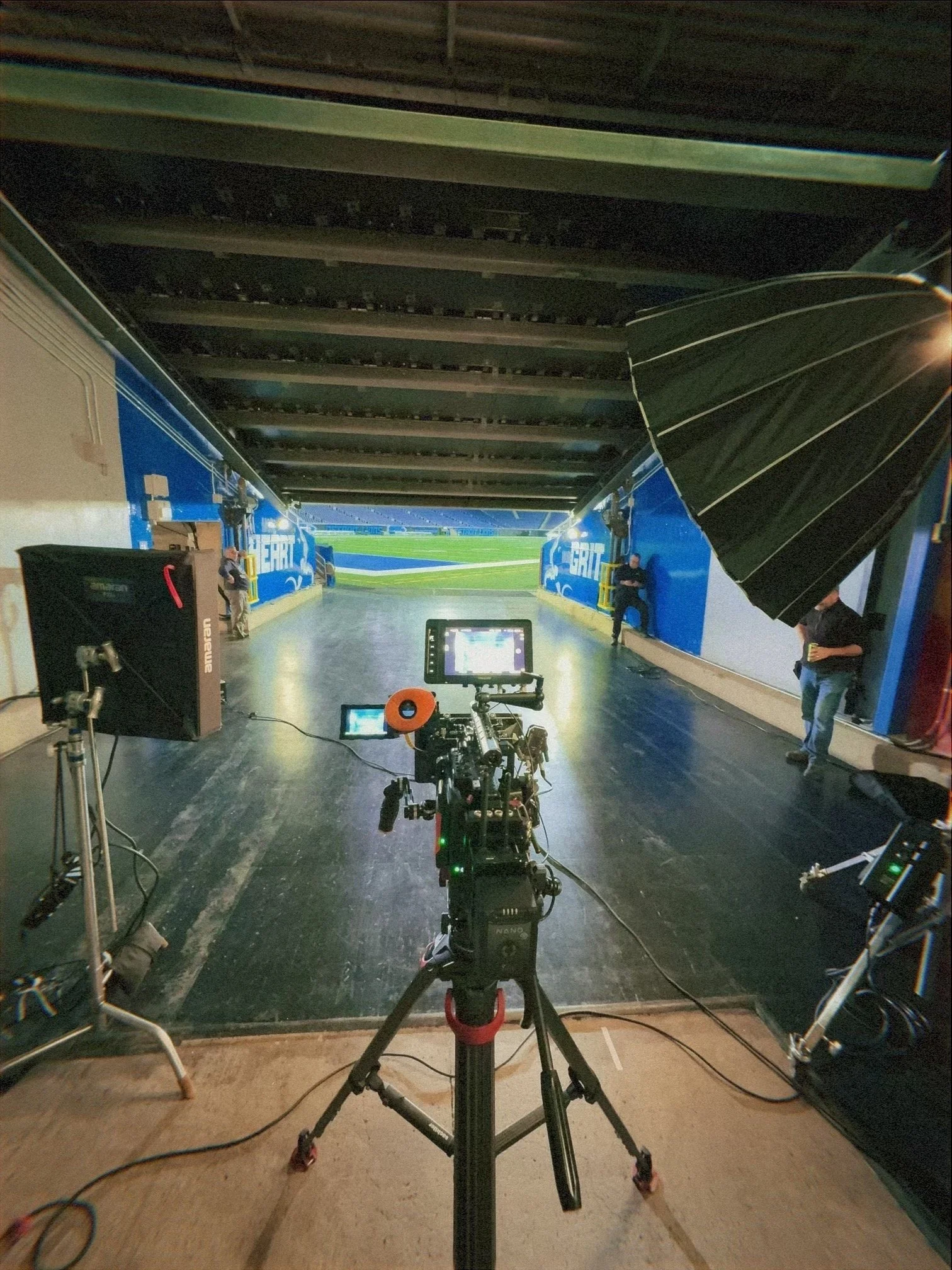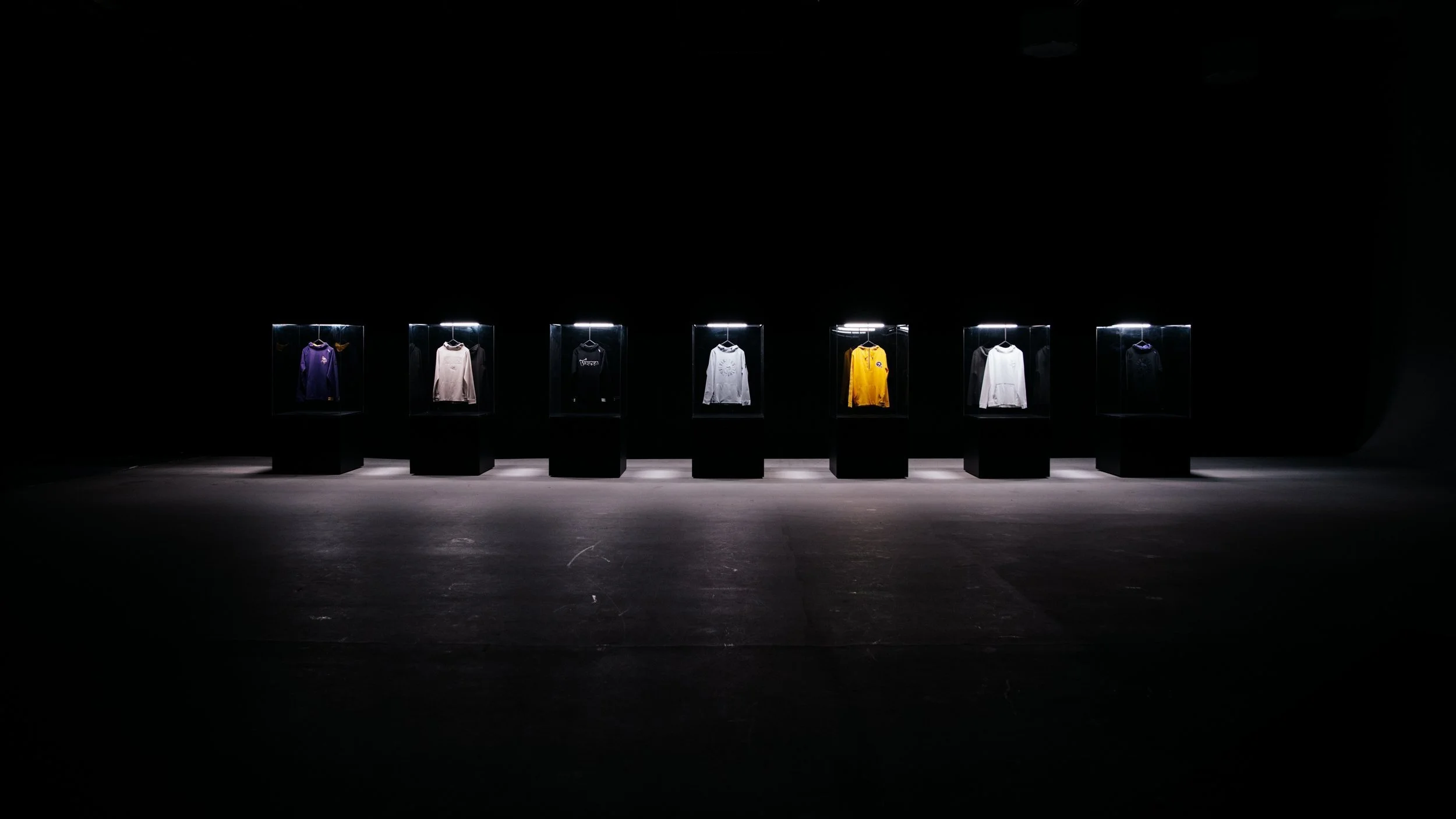Production Layout
This page serves as a high level reference point of the different ways we can tackle a production. Every shoot is unique and requires its own plan, but generally falls in one of two main strategies. We’ve addressed some pros/cons and gathered some references to visually showcase this.
Simple Crew — “Run ‘N Gun” Production
In short, this type of approach is the “grab a camera and shoot what’s in front of us” attitude. There’s maybe some planning with locations and a light or two, but overall, we’re keeping things really simple. Small cameras, typically smaller crew,
Crew Structure
An average sized crew for this type of shoot would consist of:
Producer, Director/Shooter (1-2), Production Assistant.
This can be scaled up or down depending on the needs of the shoot. Some shoots can make sense to tackle with a solo crew, others like events may follow this structure but have 6+ camera operators and editors on site, etc.
Pros
Faster
Potential for more footage on site because of this speed.
Pre production is also simpler and allows for shoots to be pulled together very fast, sometimes even the same day if needed.
Better Suited for Live Event Capture
Ability to move quickly capturing general coverage of events, activations, people, etc.
This works well when we have single man camera operators who can move around quickly covering a scene.
Cheaper
This is the budget friendly approach. Less money is spent in every phase. Pre production has less variables to handle. On site production has less equipment, lighting, and crew costs. This approach usually involves less creative development as well.
Cons
Limited lighting control.
Outdoor shooting at night time and mid day can make for really harsh lighting environments that aren’t flattering to people and products.
Interiors of locations often have poor lighting that does not look good on camera. We’re at liberty of the location’s poor lighting or lack of lighting.
Limited story telling.
With this simpler approach. There is less attention to detail with storyboards and shot lists. Things are often moving too quickly to focus on the “best shot” for the scene, often being content with “good shots”.
Lower Overall Image Quality
Although these cameras are still shooting “high resolution” footage (4K), the sum of all the parts typically results in a “less professional” image. These videos will not look like what you see in the movies or good commercials. Many variables add up to this, resulting in a more “simple / social media” look. Some of these compromises are: Lighting, Lens choice, Camera movement, Art Department, Styling, Hair and Makeup, Storyboarding, VFX, and others.
Reference Videos
Brand Social Campaign
Non-Profit Testimony Video
Event Recap
Medium to Large Crew — “Traditional” Production
This approach is what people usually think of when they hear “film crew.” We typically will have a Producer and Director guiding the ship, teams for camera department, lighting department, sound, hair and makeup, art department, editing, etc. These departments still can be stripped back or built up as needed, but regardless, there will be more attention to detail through the whole process, pre-production, production and post-production.
Crew Structure
A medium sized crew for this type of shoot would consist of:
Producer, Director, Cinematographer, Gaffer, Key Grip, Swing, Production Assistant (x2), Hair and Makeup Artist, Production Designer.
This also can be scaled up and down depending on the needs of the shoot. The key here is that departments are more separated to meet the needs of increased intentionality for the creative being captured.
Pros
Creative Intentionality and Storytelling
Arguably the most valuable pro of doing a traditional production is the increased attention to the campaigns creative and storytelling. With appropriate lead time and understanding of the product/project we can craft a campaign that is perfectly tailored to the clients goals. Whether this is social media engagement, e-commerce ads, livestream campaign or a TV commercial, the way we build this can make or break how successful the campaign is. Having intentionality up front ensures everyone is in sync with the goals of the project and what it’s going to take to get there.
Campaign Structure
Similar to the above, the logistical structure of the campaign is extremely important. The traditional production we have the ability to plan out shoot days, scenes, product capture, etc. in a way that best fits the creative vision and needs of the project.
Overall Look and Feel
This bullet point can sometimes be boiled down to “it looks better” but it’s more than that. Although part of this is shooting on cameras and using lights that perform better, it’s also building the scene, set designing, and making everything feel how it is supposed to feel to “sell the product we’re trying to sell” If we’re aiming to build a scene that best sells the perfect golf bag, it would be tough to do this on a patch of dead grass behind an office downtown. We would want to build a scene that feels right for the golf bag. This includes the camera, lights, art department, talent, etc. all being in alignment with the creative vision. With traditional production we get to make these decisions, we get to decide how important each piece of the puzzle is and make sure it happens.
Lighting Control
Light is extremely important for the bullet point above. One huge benefit to traditional production is building a schedule and crew that can control and use light professionally. Most people can pull their phone out at sunset and see that the lighting looks better than it did at 1pm. A professional crew knows how to create and replicate the lighting that’s needed for the project.
Cons
Cost
The main “downside” if we address it as such, is that the financial investment is greater. From increased creative direction / pre-production on the front end, to larger crews, more equipment, and better talent, all of these add up to larger financial costs. With anything in business, the investment must make sense for the desired outcome and project. Typically, when the assets / production being sold is attached to financial gain of the client, the costs are justified. When the assets being sold have no alignment with client revenue increasing, these costs often don’t align because the final product isn’t worth the financial investment.
Lead Time of Production
Although things can be rushed, the lead time to shooting a traditional production is greater. There’s a longer conversation being had to land on the creative direction of the project and then fleshing that out logistically.
Permits
Traditional productions are more likely to operate in/on locations that require film permits. Depending on the city and type of shoot, these can take time to secure and be speedy.
Physical Footprint on Site
When it comes to production day, more people and equipment means we’re taking up more space. This can be an issue in certain locations or live events. If we’re at a small venue capturing a live event, it may not make sense to have big trucks of equipment and full rooms of camera gear laid out.




































